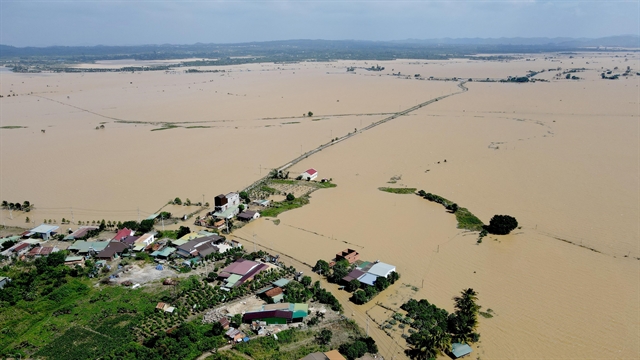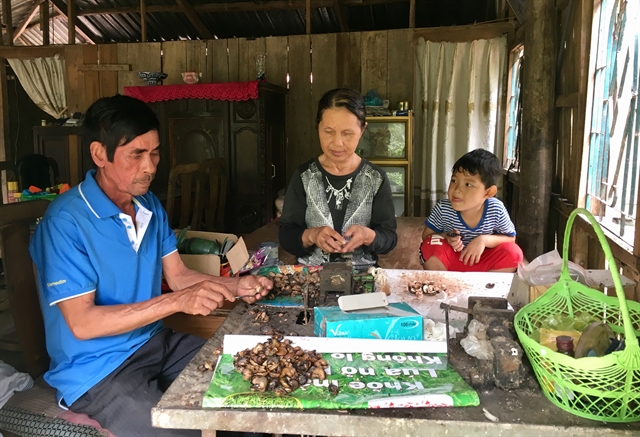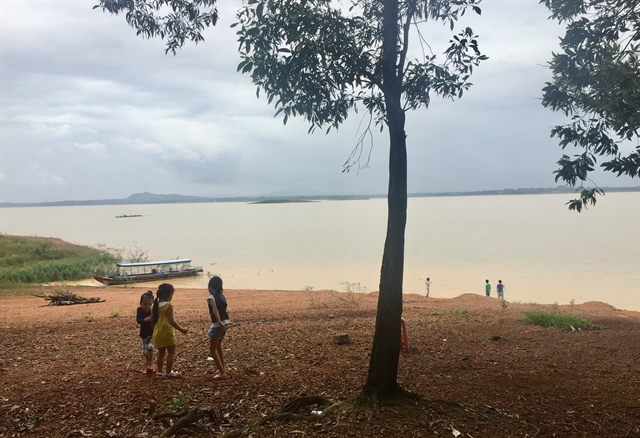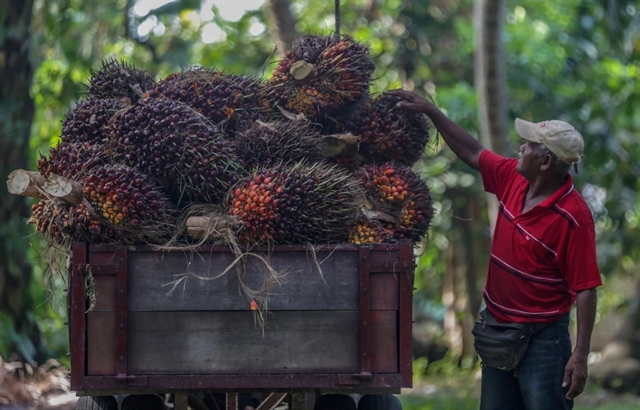 Society
Society

When Nguyễn Văn Long was 26 years old, he moved to Năm Bầu Islet in the middle of a lake in the southern province of Đồng Nai. Nothing unusual about that, but at the time he was the only person there.

|
| Nguyễn Văn Long’s family gathers in their wooden house to split cashew nut shells. — VNS Photo Ngọc Diệp |
Ngọc Diệp
ĐỒNG NAI — When Nguyễn Văn Long was 26 years old, he moved to Năm Bầu Islet in the middle of a lake in the southern province of Đồng Nai. Nothing unusual about that, but at the time he was the only person there.
Today, Long, 62, lives there with his wife and five-year-old grandson.
After leaving his hometown in Long An Province, Long settled on the islet that was formed, along with 75 other small islets, on the lake after the Trị An Hydropower Plant was built on the Đồng Nai River in 1984.
The 323sq.km lake was once a forest, and in the early days, Long made a living by sawing down trees.
The islet, which covers about 4ha, is only three kilometres from the main shore. It can only be reached by boat.
In 1987, local residents began to call the islet Năm Bầu because Long's wife was pregnant at the time. Năm is his wife’s nickname and Bầu means pregnant.
“The name helped locals distinguish this islet from the others on Trị An Lake,” Long said.
His family later shifted from growing rice, corn and beans to planting cashew trees because of the local soil.
About 2-3 tonnes of raw cashew nuts are harvested annually if the weather is good. The cashew crop is now Long's main source of income.
Though the family faced difficulties over the years, they have been able to adapt to changing situations, according to Long.
.jpg)
|
| The family also breeds chickens. — VNS Photo Ngọc Diệp |
For extra income, Long uses a boat to catch fish and other aquatic species to sell in the market.
“During the rainy season, I always have a good catch. Sometimes, I spend the whole night fishing,” he said.
Besides cashew and fish, the family also grows mango trees and breeds chickens and pigs.
Many trees, mostly earleaf acacia, have been planted on the islet to prevent land erosion.
Long's wife, Trần Thị Thanh Nga, 57, whose hometown is Cần Thơ City, said they once lived without electricity and tap water, and had to use oil lamps and store rainwater for daily use.
“But our life has become more stable,” Nga said.
.jpg)
|
| Solar panels installed on their house’s roof provide electricity demand. — VNS Photo Ngọc Diệp |
In 2011, solar power panels were installed on the roof of their house to generate power for electricity.
In the past, they had to use a rowboat for transport, but now they have a motorboat.
Nga still cannot swim, but can "drive the boat well", she said.
Their two daughters and a son are married. The son and his wife now live in a rented house on the main shore near the islet.
“My grandson was born on the island and also likes to live here,” Nga said.
Every day, Long take his grandson by boat to school and they swim in the lake every evening.
At noon, the family gathers in the small wooden house to split the shells of cashew nuts and watches television in the evening.
They leave the islet only for the Tết (Lunar New Year) holiday and on special occasions to visit relatives and friends.
“We really love the peaceful life here. We have no plan to move to another place,” Long said.
Eco-tourism potential
Năm Bầu Islet has seen a rising number of visitors in recent years. Most of them are young people or families who want to explore pristine nature and enjoy fresh air away from the big city.
In recent years, people who visited Trị An Lake and stopped on the islet for rest asked Long and his family to cook dishes.
As more people began to hear about the islet, the number of visitors increased.
“We built a small hut with hammocks to serve them,” Long said.

|
| The natural beauty and peaceful atmosphere of Năm Bầu islet on Trị An Lake attracts many visitors. — VNS Photo Ngọc Diệp |
After people suggested that he offer an eco-tourism model, Long built accommodations for a homestay service with prices at only VNĐ50,000 (US$2.15) per person per night.
Last year, the family installed more solar power panels to ensure electricity needs for visitors.
To promote eco-tourism, Đồng Nai Province's Culture and Nature Reserve plans to add the islet to its package tour on Trị An Lake.
Nguyễn Hoàng Nam, a tour guide at the reserve, said he had taken many groups of tourists to the islet.
The family can serve 15-20 people daily, or a maximum of 30 visitors.
“This place is one of the best choices for people looking for peace and quiet,” Nam said.
Visitors can ride in boats and catch fish in the lake, taste local dishes prepared by the family, and enjoy fresh fruits from their garden at reasonable prices, he said.
Many people often buy fresh fish to take back home as gifts.
“I feel very relaxed here. My children enjoy this place,” a female visitor from HCM City said.
As a present to them, she brought them to the islet and stayed overnight there.
She said she would likely return and tell other people about the islet's offerings.
Long said he was happy to receive guests. “Tourists are very welcome if they are well-behaved and care for and protect the environment,” he said.
He hopes the next generation will continue not only to live on the islet, but also protect the natural landscape and the peaceful atmosphere. — VNS




